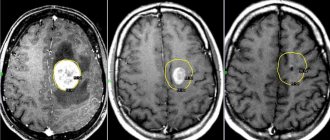Selective mutism is a complex childhood anxiety disorder characterized by the child's inability to communicate in social settings. These children can speak in an environment where they feel comfortable, safe and calm.
More than 90% of children with selective mutism also suffer from social phobia. This disorder is quite debilitating and painful for the child. Children and adolescents with selective mutism have a real fear of speaking in social settings.
Important!
Many children with selective mutism have great difficulty responding nonverbally, so social functioning may be compromised in many children.
Not all children express their anxiety in the same way. Some may be completely quiet and unable to speak to anyone in a social setting, others may only speak occasionally or speak quietly. Some children may stand still with fear as they encounter specific social conditions. They may become frozen, unemotional, and socially isolated.
Important!
Children with less severity may appear relaxed and carefree and can communicate with one or more children, but may not speak well with teachers or most of their peers.
Compared to the typically shy and timid child, most children with selective mutism are at extreme levels of shyness and self-consciousness.
What is selective mutism
Selective mutism, also called selective mutism, is a mental disorder in which an adult or child is unable to speak in certain situations or in the presence of certain people. For example, in the presence of a teacher or boss, within the walls of a school classroom, in the principal’s office. At the same time, a person has the ability to speak: in familiar and non-stressful conditions, he successfully communicates and speaks.
How does selective mutism manifest?
Symptoms of selective mutism most often appear in children. Adults adapt to their condition, eventually learning to communicate when necessary.
In children
Children with selective mutism can speak and in the family most often actively communicate with members of the household. But sometimes situations arise in which anxiety and fear are so overwhelming that the baby cannot say a word.
In most cases this happens at school or kindergarten. The child freezes and is silent when he is addressed or asked about anything. At the same time, it is clearly visible that he understands speech: he responds to names, carries out instructions, and can answer questions with head movements. Often communicates through facial expressions and gestures. He relieves anxiety with obsessive movements: fiddling with something in his hands, fingering his hair, pulling his eyelashes.
The main difference between selective mutism and other diseases that cause muteness, for example, Asperger's syndrome or autism, is the preservation of speech in general and its absence only in specific situations.
In adults
In an adult, selective mutism manifests itself in most cases in the form of anxiety and excitement. When communicating with other people, he may speak quietly, stumble over every word, and blush. Obsessions also occur: when talking, a person may, for example, vigorously fiddle with something in his pocket, thoroughly soap his hands, or pick his nails.
Kinds
The main symptom of the disorder is the lack of speech activity in the child. However, depending on the form of the defect, it can manifest itself in different variations and be accompanied by accompanying symptoms.
The most common types of mutism are:
- elective;
- psychogenic;
- endogenous-psychotic.
Selective mutism
It is also selective, or selective mutism manifests itself episodically, under certain circumstances. The child behaves relaxed, active, chatting incessantly in the family, but in the garden or at school, with strangers, he remains silent. That is, he retains the ability to speak and understand speech, but he does not want to use it in certain situations.
Selective mutism, as well as negativism, can manifest itself in relation to an individual or environment. In this case, the mutist withdraws, averts his eyes, “shrinks,” does not respond to someone addressing him, or communicates with gestures. This form of the disease becomes a sign of social phobia.
Typically, this form of mutism occurs in children over 4 years of age. Their speech development up to this point corresponded to the norm, and they began to talk on time.
If a defect manifests itself as a negative reaction to an individual person or circumstances, then it is accompanied by pronounced negative emotions. Against this background, the baby experiences spasms in the neck, caused by contraction of the vocal cords and clenching of the jaw. This provokes an attack of fear, which aggravates the child’s condition and contributes to the consolidation of a neurotic response to this person or situation.
At first, parents scold the silent person, interpret his behavior as whim or stubbornness. This position is fundamentally wrong. Since neglect of this circumstance leads to social disadaptation.
Psychogenic mutism
Psychogenic mutism often manifests itself in 2 forms: hysterical and logophobic.
Over-emotional children with unstable moods are susceptible to hysterical mutism. It manifests itself under the influence of a strong stressor, or it can become a way to attract attention and achieve what you want.
In front of a 10-year-old girl, a car hit and killed a man. For her it was a great shock. Her legs stopped working, she could not stand and fell. Speech was lost, she ignored all questions addressed to her. Then inhibition gave way to excitement. She started running and jumping with a smile on her face. After treatment with psychotic drugs, the consequences of the shock were eliminated.
Logophobic mutism becomes a manifestation of an obsessive fear of hearing oneself speak. More common among schoolchildren. It can manifest itself in certain cases, for example, during public speaking. Or the child has a fear of pronouncing certain words. But there are times when children are afraid to speak in principle.
The logophobic form of the defect can form for several reasons. For example, as a result of low self-esteem, when there is a fear of hearing negative feedback from others. Or as a result of chronic fatigue.
This may be a consequence of acquired fear, in which the child has instructed himself to remain silent. For example, a mother suffering from alcoholism, while intoxicated, showed physical and verbal aggression if her son approached her and began to tell or ask for something.
The language barrier also plays a role in the flourishing of logophobia when children find themselves in an area with a dialect that is new to them.
But there are also physiological causes of the disorder. One of them is halitosis, that is, a person develops bad breath, which is associated with the extensive growth of pathogenic bacteria in the oral cavity. The child is embarrassed to speak because he is afraid that if he opens his mouth, those around him will smell the stench and make him laugh.
Endogenous psychotic mutism
Such pathological silence manifests itself within the framework of endogenous diseases. Schizophrenia is a prime example of this. With this psychotic disorder, the list of symptoms often includes catatonic mutism, which is part of the catatonic syndrome. It usually manifests itself in the form of the disease of the same name and becomes a sign of negativism.
As a rule, this form of mutism is characteristic of the stage of catatonic stupor, and occurs along with motor retardation.
In addition, there are delusional and hallucinatory mutism, which appears within the framework of delusional ideas and visions, as well as manic, depressive and mixed.
Prevalence of selective mutism
The disease most often occurs in children aged 2.5 to 9 years. Before this age, the absence of speech is considered normal, and after that, the child’s psyche is already compensated on its own or with the help of therapy, as a result of which he begins to communicate, although sometimes this is not easy for him. According to statistics, selective mutism occurs in no more than 1% of the population, but there is a possibility that not all cases are recorded. Statistics also indicate that the disease is more common in girls than in boys.
Why does it appear
Mutism in children in most cases develops between the ages of 3 and 9 years, and is primarily associated with a neurotic disorder . It often becomes a symptom of neurosis.
Various psychological factors can lead to the formation of this defect . The personal qualities of the child himself play a big role. Typically, this disorder occurs in children with infantile character traits: impressionability, tearfulness, sensitivity and vulnerability, shyness, timidity, and lack of independence.
The nature of upbringing that is followed in the family towards the child also has an impact In a number of cases, children suffering from pathology had a close relationship with their mother and were brought up in an atmosphere of hyperprotection. On the other hand, the risk of acquiring pathology arises in an unfavorable family environment, with conflicts and aggression.
Another typical mutic model of upbringing is the “family idol.” Among the character traits found in such a child are selfishness, egocentrism, and inflated self-esteem. In this case, mutism develops as a protest against unwanted communication and may be one of the manifestations of hysterical neurosis. The child thus declares unworthy or unwanted treatment for him and expresses a lack of attention.
As with any neurotic disorder, a psychotraumatic factor . Any event that makes a strong negative impression on a child can trigger a pathological reaction. Among the most typical are moving, separation from loved ones, violence. Thus, a pattern of occurrence of the disease in emigrants, preferably elderly and children, was established. Although for each little mutist such factors are different.
An 8-year-old boy showed taciturnity at school. Any attempts by the teacher to establish verbal communication with him were in vain. During lessons, he remained deathly silent, answering only in writing. The relatives turned to a psychologist for help, and during the conversation it became clear that two important events occurred almost simultaneously in the boy’s life: the birth of his younger sister and the transfer to another school. It is likely that their symbiosis became the traumatic effect that led to this consequence.
Psychosocial factors have a special place in the formation of the disorder, but they are not always the ones that lead to it. Pathological reticence is becoming a typical symptom of many mental illnesses. Among them: autism, mental retardation, anxiety-phobic disorder, as well as schizophrenia and depression.
It often happens that a small patient is brought to an appointment with completely different complaints, such as enuresis, phobias. During the survey, it was possible to establish the fact of mutism.
Another group of provoking factors are physiological reasons . For example, traumatic brain injury, organic brain damage.
Reasons for development
Selective mutism is a disease that is formed as a result of biological and social factors. The first include a hereditary predisposition to increased anxiety and a weak type of nervous activity. Social reasons include the following:
- frequent exposure to stressful situations;
- psychotrauma;
- traumatic brain injuries;
- constant serious conflicts between members of the child’s family and with him;
- authoritarian, too strict parenting style;
- increased anxiety of the mother;
- rude treatment of other adults surrounding the child, for example, teachers;
The more factors in the development of selective mutism in a child’s life, the greater the likelihood of its occurrence and the more difficult it is to correct it.
Make a diagnosis - how to do it correctly and quickly?
The phenomenon of mutism is extremely difficult to separate from other psychopathology precisely because of childhood, when the difficulty arises with the question: is this a true disease, the whim of a stubborn child, or his mental retardation?
The transition of the syndrome into a protracted and chronic course is often facilitated by the child’s parents themselves, who expect that the child will “outgrow” his muteness, but for now he is “simply embarrassed to speak.”
To establish the truth, it is necessary to collect information about the child’s entire previous life, including:
- features of the course of the intrauterine period;
- shocks and tremors suffered by the pregnant mother (mental and physical trauma);
- the child’s reaction to vaccinations;
- features of the dynamics of its development.
Particular attention is paid to fears and phobias that are inherent in a particular child: fear of the dark, being alone, panic fear of punishment for a committed offense, because the feeling of guilt in such a child is often completely incommensurate with the method of punishment used.
Article on the topic: Causes and first symptoms of a microstroke - how the signs differ in women and men
In the case of the presence of another, concomitant pathology of the psyche and personality, the task of the diagnostician becomes even more complicated - an error in diagnosis can result in the loss of precious time and delay in treatment of the true cause of mutism.
In addition to monitoring the patient’s psyche, it is also necessary to study the organ that determines its strategy and tactics - the brain. No less important attention should be paid to the study of the general physical development of the body.
Since we are talking about diagnosing neurosis (or a mental disorder), laboratory and instrumental research methods should come to the aid of the doctor:
- craniogram (x-ray of the skull), which gives an idea of the volume of the brain and the features of its structure;
- MRI and CT , which perform the same task more accurately and layer-by-layer;
- EEG , which tells about the level of electrophysiological processes occurring in the brain;
- blood and urine tests , which allow us to determine the degree of maturity and development of the body based on the level of hormones in these biological fluids.
Other, appropriate methods of “investigation” are also appropriate, often similar to a criminal mystery of a case and the involvement of other specialists in it.
Treatment
To treat selective mutism in a child, a set of measures is taken. Firstly, this is drug therapy, which includes:
- antidepressants;
- nootropics;
- serotonin reuptake inhibitors;
- neuroleptics.
These medications help reduce anxiety, relax muscle spasms, and relieve neuropsychic tension.
Secondly, the use of psychotherapeutic practices is mandatory. It is necessary to teach the patient other behavioral strategies, gradually displacing his usual ways of responding. Most often, work is carried out in the following psychotherapeutic areas:
- Cognitive behavioral therapy helps a person understand his condition and, at a behavioral level, learn to behave differently in difficult situations.
- Play therapy works with both children and adults: it helps to open up, relax, play out situations in imaginary conditions in which strong nervous tension arises, and behave differently in them than in reality. Over time, the behavior in them is transferred to communication in real conditions.
- Training methods for relieving anxiety, improving the quality of communication skills, and developing the ability to adequately interact with others.
Diagnosis of mutism
Sometimes it is quite difficult to recognize a disease, especially when it comes to children, because the line between a whim, an act of protest and a psychological disorder can be very arbitrary. To avoid the disease becoming chronic, the following diagnostic tests are carried out at the first alarming symptoms:
- General medical history;
- Examination by a neurologist. A number of studies are being carried out, which will include an assessment of the quality of speech, reflexes, breathing rhythm, and an analysis of the presence/absence of neurological pathologies;
- Craniogram. To draw conclusions about what the patient's brain looks like, an X-ray of the skull is taken;
- CT and MRI;
- Electroencephalography. Without analyzing the level of electrophysiological processes that occur in the brain, it is impossible to create a complete clinical picture;
- Urine and blood analysis.
As necessary, the patient must undergo a number of additional studies and consultations with related specialists.
How can parents help their child?
The child spends most of his life in the family. The conditions in it should be the most comfortable for him, so that selective muteness gradually recedes. Therefore, parents should take care of the baby, slightly adjusting their life to suit him.
What can parents do?
- Accept the child and his condition. Do not scold for silence, do not try to force someone to speak, as these actions will only lead to the opposite effect. When other people try to communicate with him, do not answer questions for him, but inform the interlocutor that the child will speak when he is ready.
- Build relationships with each other. A child whose parents constantly quarrel often blames himself for this. As a result, his self-esteem decreases. Fears appear. Phobias and anxieties, which are often a trigger for the development of selective mutism.
- Reconsider your relationship with your child. Parents often do not notice how they themselves create high anxiety in their child. For example, with authoritarian parents, a child often has problems communicating in specific situations due to the fear of making a mistake and receiving a portion of disapproval for it. And with parents who themselves have a high level of anxiety, children read information that the world is dangerous and subconsciously conclude that it is better to remain silent in it than to speak.
- Increase self-esteem. The more often a child is praised for his achievements, the more confident he feels.
- Give free rein to emotions. If a child is aggressive at home, teach him appropriate methods of expressing anger, for example, tearing paper or hitting a pillow. If you are nervous, you can give your child or schoolchild a bowl of sand or cereal. By moving and pouring from hand to hand, the child gradually calms down and relaxes.
Causes
Scientists cannot yet name the exact reasons for the development of selective mutism, but it can often be associated with excessive anxiety in children; they even have social phobias and anxiety states. Sometimes selective mutism develops against the background of severe psychological trauma; children literally withdraw into themselves and simply stop speaking.
Another theory is heredity; there is an opinion that this feature develops in children whose parents suffer from increased anxiety.
20-30% of children with selective mutism also have speech impairments, which further exacerbates their self-doubt.
If you ask the child himself what prevents him from speaking, then most often they talk about excessive attention or the feeling of a lump in the throat that prevents him from pronouncing words.
My experience working with children with selective mutism
The boy Timur came to kindergarten at the age of 3.2 years. Mom immediately warned: he is silent, does not speak. After finding out the details, it became known that speech is fine at home, but in the presence of strangers it completely disappears.
For the first two weeks, the baby, while in kindergarten, did everything automatically: he ate himself, dressed himself, fulfilled all requests and instructions. Mom, seeing how independent he was, was very surprised: at home she had to feed him with a spoon - he didn’t eat on his own. It was most likely related to anxiety as well. In kindergarten, he tried to do everything in such a way as to interact less, so as not to be scolded. I missed my mother, but I also cried silently, only the tears flowed. He practically did not smile, there was almost no facial expression. I understood the speech perfectly.
After a few months, he began to behave more calmly in the garden, interacted with the children, played, participated in joint activities, but was still silent. A kindergarten psychologist worked with him, relieving muscle and emotional tension, and the child was also observed by other specialists outside the kindergarten. He began speaking in kindergarten only at the age of 6, thanks to the long-term help of doctors, psychologists and speech therapists. Today the boy is no different from his peers.









